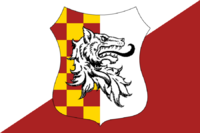Slorbo-Glormorian Empire: Difference between revisions
Jennydxxth (talk | contribs) (Created page with "{{Infobox territory | colorcode = #280F47 | flag = 200px | name = Slorbo-Glormorian Empire | governor = Emperor Franguis-Heleanore VI | capital = Glorbitz | citizens = 5.1mil (1913) | government = Trimonarchy under House Chatsburg }} The '''Slorbo-Glormorian Empire''', also known as the '''Empire of Slorbs, Glormors, and Bloats''' and colloquially known as the '''Empire''', was an empire from the years of 1704 and 19...") |
Jennydxxth (talk | contribs) (Meropia -> Meridia, following recent lore updates) Tags: Mobile edit Mobile web edit |
||
| Line 8: | Line 8: | ||
| government = Trimonarchy under House Chatsburg | | government = Trimonarchy under House Chatsburg | ||
}} | }} | ||
The '''Slorbo-Glormorian Empire''', also known as the '''Empire of Slorbs, Glormors, and Bloats''' and colloquially known as the '''Empire''', was an empire from the years of 1704 and 1919. Ruled by House Chatsburg, the Empire held control over the Central | The '''Slorbo-Glormorian Empire''', also known as the '''Empire of Slorbs, Glormors, and Bloats''' and colloquially known as the '''Empire''', was an empire from the years of 1704 and 1919. Ruled by House Chatsburg, the Empire held control over the Central Meridian area now composed of the [[Slorb Republic]], [[Glormorian State]], the [[State of Bloatia]], the [[Republic of Faru]], and the [[Nepublian Federation]], as well as the largely unrecognized Lenor Commune. The Empire was very ethnically diverse, consisting of many groups of people from across Meridia. | ||
The Empire was established by Emperor Jan-Franz I of Chatsburg on 17 September 1704, via the Glorbitz Treaty which formally unified Imperial Slorbia and the Kingdom of Glormoria. The Duchy of Bloatia was annexed in 1749, following the Siege of Bagrezh and the 1750 Treaty of Kroletfaru. The Imperial Duma of Glorbitz granted special status as a Duchy to Bloatia in 1893, in an attempt to preserve the Empire. | The Empire was established by Emperor Jan-Franz I of Chatsburg on 17 September 1704, via the Glorbitz Treaty which formally unified Imperial Slorbia and the Kingdom of Glormoria. The Duchy of Bloatia was annexed in 1749, following the Siege of Bagrezh and the 1750 Treaty of Kroletfaru. The Imperial Duma of Glorbitz granted special status as a Duchy to Bloatia in 1893, in an attempt to preserve the Empire. | ||
Slorbo-Glormorian authority and influence began to dwindle in the late 1870s, and it continued to dwindle until the [[Great | Slorbo-Glormorian authority and influence began to dwindle in the late 1870s, and it continued to dwindle until the [[Great Meridian War]], in which the Empire lost horribly and capitulated to enemy forces. Following the loss of the war, the constituents of Slorbo-Glormoria began to separate from the Empire, beginning with the Province of Faru declaring [[Farun Revolution|independence]] as the Republic of Faru under General [[Kenneth Infaru]]. Communard uprisings in major cities such as Baśdow, the suicide of Franguis-Heleanore VI, as well as republican revolutions in Nepublia and Glormoria swiftly killed the Empire, leading to the '''Final Settlement in Regards to the Former Empire of Slorbs, Glormors, and Bloats''' being signed in 1920 by diplomats from the former territories. | ||
Revision as of 02:14, 27 July 2024
Slorbo-Glormorian Empire | |
|---|---|
 | |
| Ruler | Emperor Franguis-Heleanore VI |
| Capital | Glorbitz |
| Government | Trimonarchy under House Chatsburg |
The Slorbo-Glormorian Empire, also known as the Empire of Slorbs, Glormors, and Bloats and colloquially known as the Empire, was an empire from the years of 1704 and 1919. Ruled by House Chatsburg, the Empire held control over the Central Meridian area now composed of the Slorb Republic, Glormorian State, the State of Bloatia, the Republic of Faru, and the Nepublian Federation, as well as the largely unrecognized Lenor Commune. The Empire was very ethnically diverse, consisting of many groups of people from across Meridia.
The Empire was established by Emperor Jan-Franz I of Chatsburg on 17 September 1704, via the Glorbitz Treaty which formally unified Imperial Slorbia and the Kingdom of Glormoria. The Duchy of Bloatia was annexed in 1749, following the Siege of Bagrezh and the 1750 Treaty of Kroletfaru. The Imperial Duma of Glorbitz granted special status as a Duchy to Bloatia in 1893, in an attempt to preserve the Empire.
Slorbo-Glormorian authority and influence began to dwindle in the late 1870s, and it continued to dwindle until the Great Meridian War, in which the Empire lost horribly and capitulated to enemy forces. Following the loss of the war, the constituents of Slorbo-Glormoria began to separate from the Empire, beginning with the Province of Faru declaring independence as the Republic of Faru under General Kenneth Infaru. Communard uprisings in major cities such as Baśdow, the suicide of Franguis-Heleanore VI, as well as republican revolutions in Nepublia and Glormoria swiftly killed the Empire, leading to the Final Settlement in Regards to the Former Empire of Slorbs, Glormors, and Bloats being signed in 1920 by diplomats from the former territories.

